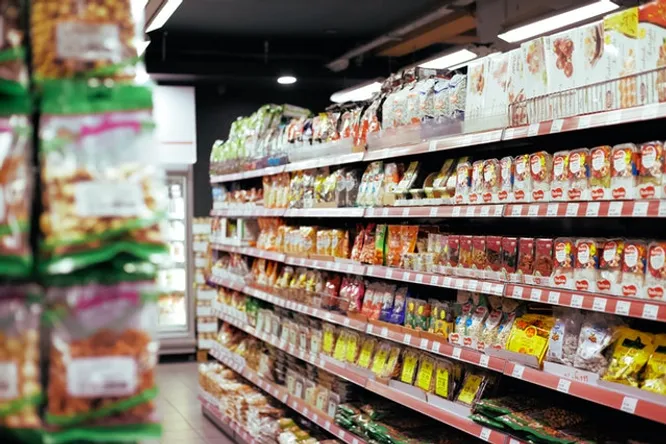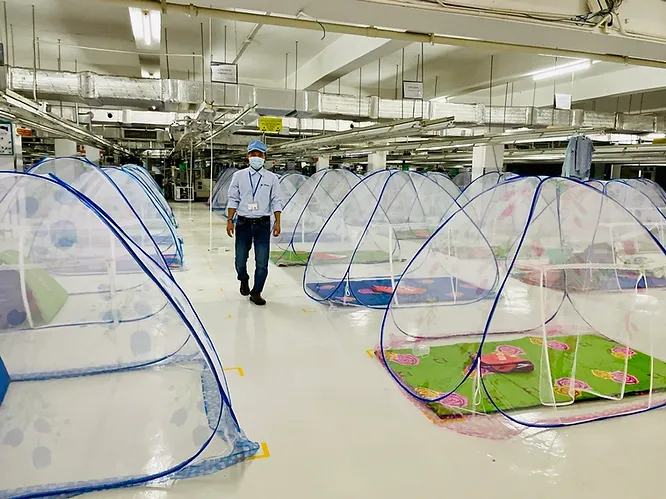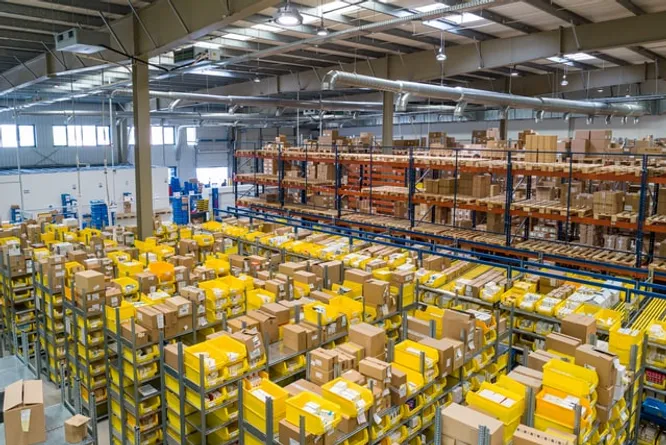FMCG is a vast and lucrative market with numerous brands and a massive customer base. This means there is a significant demand for logistics and supply chain management within the FMCG sector. With the immense volume of goods and sales points, logistics and supply chain management pose a considerable challenge for FMCG enterprises. So, what is the solution to this problem? Let's explore this with Abivin in the following article!
Overview of FMCG Logistics and Supply Chain
What is the FMCG industry? Characteristics of FMCG?
FMCG stands for fast-moving consumer goods. Products in this sector include commonly used items such as shampoos, bath gels, confectionery, etc. The characteristic of this industry is that products are consumed quickly and have relatively low costs. This means that the profits of FMCG companies rely primarily on the large volume of goods sold. The more and faster the goods are sold, the higher the profit. For large manufacturers, hundreds or even thousands of products can come off the production line in a minute. Therefore, logistics and supply chain operations in this sector need to be optimized to ensure production and distribution timelines.
 FMCG Logistics and Supply Chain Operations
FMCG Logistics and Supply Chain Operations
FMCG Logistics and Supply Chain Operations
In general, logistics and supply chain are essential parts of the economy. According to the ‘2022 Third-party Logistics Study’, in the U.S., total logistics expenditure accounts for 10% of a company's total revenue. In Vietnam, this number is even significantly higher. In the FMCG sector, logistics and supply chain also play a crucial role. With a large volume of goods and extensive distribution networks, FMCG enterprises need sufficiently large warehouses and vehicle fleets to meet secure storage and fast transportation needs. In the FMCG sector, logistics is not just about transportation but involves all activities from production to consumption. Thanks to efficient logistics and supply chain operations, FMCG companies can produce and distribute products to stores quickly. However, if any link in the supply chain malfunctions, the business can face major problems, leading to loss of customer trust.
Supply Chain Disruptions in the FMCG Sector During and After the Covid-19 Pandemic
The fourth wave of the Covid-19 pandemic was perhaps the first time the term "supply chain disruption" appeared so frequently in the media. This situation impacted not only Vietnam but also the entire world. As an essential industry, FMCG companies faced numerous challenges recently.
Firstly, the pandemic and lockdowns posed challenges for businesses right from the production process. Companies had to implement "three on-site" production to ensure operations. However, this method also carried many infection risks. At this point, businesses were in a very difficult situation because all production activities had to pause for contact tracing and ensuring safety against the pandemic. This can be considered an unprecedented challenge in production. Businesses were in a "catch-22" as they had to ensure sufficient personnel for production according to orders while bearing costs and ensuring the safety of employees.
Moreover, transportation faced many difficulties, from transporting raw materials to finished products. During the pandemic, many localities implemented lockdowns and social distancing; drivers had to undergo many procedures, and the number of interprovincial transport vehicles decreased significantly. Simultaneously, the number of e-commerce orders increased, causing longer delivery times than usual.
 Các doanh nghiệp thực hiện sản xuất ba tại chỗ để tránh đứt gãy chuỗi cung ứng
Các doanh nghiệp thực hiện sản xuất ba tại chỗ để tránh đứt gãy chuỗi cung ứng
Costs were also a significant issue causing global supply chain disruptions during the pandemic. During this period, raw material costs increased due to scarcity. Additionally, transportation costs also rose. Recently, energy shortages caused fuel prices in Vietnam to reach their highest levels in seven years.
Faced with all these challenges, many FMCG companies struggled to find solutions for logistics and supply chain issues. Although logistics and production activities are gradually recovering and getting back on track after prolonged lockdowns, these remain long-term issues that businesses need to address to prepare for future scenarios.
Key Logistics and Supply Chain Issues Facing FMCG Businesses
Reducing Logistics Cost
Cost optimization is always a desire for all businesses, including FMCG companies. According to the World Bank, logistics costs in Vietnam are over 20% of GDP, while this rate in China is 14.5%, and in the U.S. is about 10%. It can be said that logistics costs in Vietnam are much higher than in developed countries, preventing businesses from achieving optimal profits. The Annual 3PL Study also found that 98% of FMCG companies and 99% of 3PL companies want to reduce logistics costs. Therefore, this is a primary concern for businesses in this sector.
There are three main reasons why Vietnam's logistics costs are much higher than the global average. The first reason is logistics infrastructure. Although infrastructure has improved significantly over the past decade, bottlenecks still exist. For domestic transport, road transport remains the most common mode despite its high costs. Meanwhile, the domestic railway system is outdated and not connected to ports, and the inland waterway system is underutilized.
Furthermore, the relationship between domestic and foreign enterprises is still not close. Foreign companies hold up to 75% of the logistics and supply chain services market, while Vietnamese companies hold 25% - primarily SMEs and FDI companies.
Notably, Vietnamese businesses still conduct logistics activities traditionally and manually. Due to the lack of technological application and digital transformation, logistics activities become inefficient, wasting time, resources, and costs.
Therefore, businesses need to find ways to address these issues to optimize logistics costs.
SKU Management and Goods Storage
Inventory management is also a significant challenge. Warehouses face an increasing variety of goods, sizes, and packaging types – addressing the increase in SKUs is a problem that needs attention. Additionally, businesses need to effectively monitor the status and expiration dates of goods to control costs at a reasonable level. This may sound simple, but in reality, for the FMCG sector, it is a significant challenge. This sector has a massive volume of goods with different storage and preservation conditions, and the designs and packaging are also very diverse. Therefore, controlling all products is quite difficult.

The diversity of goods also leads to difficulties in managing warehousing activities. Goods need to be carefully controlled from the moment they enter the warehouse. Where and how to place the goods are issues businesses must consider. The warehousing process also has many aspects to consider, such as: When to release goods, which type of goods to release, how much to release, and the location of the goods to be released in the warehouse. These seemingly minor issues can actually cause businesses to waste a lot of time and effort, not to mention money. For example, when an employee comes to pick up goods to release item A, but neither the warehouse keeper nor the employee knows where the item is stored, and the system does not support searching in the warehouse due to a lack of input data. At this point, they may spend a lot of time searching, possibly leading to delays in releasing and delivering goods.
Shortening Time to Market for New Products
In today's market, customer needs are constantly changing, and consumer trends shift rapidly. Therefore, businesses must quickly grasp trends and respond to the market by launching new products to meet customer needs. Companies with optimized supply chains can launch products faster. This is a significant advantage, especially for companies in the FMCG and fashion sectors.
 Zara's Optimized Supply Chain
Zara's Optimized Supply Chain
Zara is a prime example of an effective supply chain in the fashion industry. As a fast fashion brand, its products are trendy and quickly follow the latest designs. This requires Zara to launch designs and products quickly. Statistics show that Zara's time to market for new products is one-third that of other fashion companies. Additionally, Zara's inventory turnover rate is about half that of other retail brands. Zara achieves this through an optimized supply chain, a tight production process, and an efficient distribution system. As a result, Zara has become one of the world's leading fashion brands.
Logistics and Supply Chain Solutions for FMCG Enterprises
To effectively address these issues and grow their business, FMCG companies need to combine a set of logistics and supply chain solutions. In this article, Abivin suggests some prominent solutions to help businesses optimize logistics as follows.
Using 3PLs
According to the 2022 Third-party Logistics Study, 89% of shippers said they could successfully solve logistics optimization problems when collaborating with third-party logistics providers (3PLs). 73% of companies said their customer service improved after using 3PL services. Most shippers also believe 3PLs help them increase logistics efficiency and reduce overall logistics costs.
The reason for this effectiveness is due to the expertise and facilities of 3PLs. Without using 3PLs, companies would have to manage logistics and supply chain operations themselves, with their own warehouse systems, vehicles, and personnel. However, investing in logistics facilities and personnel is a significant expense for businesses, especially SMEs. Meanwhile, 3PL companies have expertise in logistics, complete facilities, and industry relationships to efficiently implement logistics activities.
Digital Transformation of FMCG Logistics and Supply Chain Management with Abivin VRoute
In Vietnam, logistics is still considered a traditional industry. Businesses may have digitized operational and production processes but left out the digital transformation of logistics. Therefore, logistics operations and supply chain management remain quite manual and inefficient. Especially when faced with extraordinary situations like prolonged pandemics, this operation method reveals many weaknesses. Thus, 3PL and FMCG companies need to digitize logistics activities as soon as possible.
Companies can start digitizing logistics activities from the simplest step: digitizing documents. Information and documents about products, vehicles, and personnel need to be stored in soft copy, preferably in spreadsheet format. Then, businesses need to analyze and create processes, combining old logistics operations with new digital tools to create a comprehensive digital transformation process. Next, companies need to find the right digital transformation tool for the process they have created.
Abivin VRoute 4.0 is a comprehensive digital transformation system for the supply chain with AI technology. Abivin uses AI technology with proprietary optimization algorithms to help businesses solve vehicle routing, pick and drop, 3D loading and inventory optimization, carrier selection, or cold chain transportation problems. Manual transportation planning can take up to half a working day for businesses. But with Abivin VRoute, companies can get automated transportation plans in just a few minutes. Moreover, after planning and sending to drivers via a mobile app, managers can track the delivery process of the vehicle fleet to ensure the progress and quality of work. Once the job is completed, you can automatically receive reports from Abivin VRoute, supporting the evaluation and decision-making process. With Abivin VRoute, businesses can optimize logistics and supply chains on a single platform.
Three Problems and Solutions for Logistics and Supply Chain in the FMCG Sector